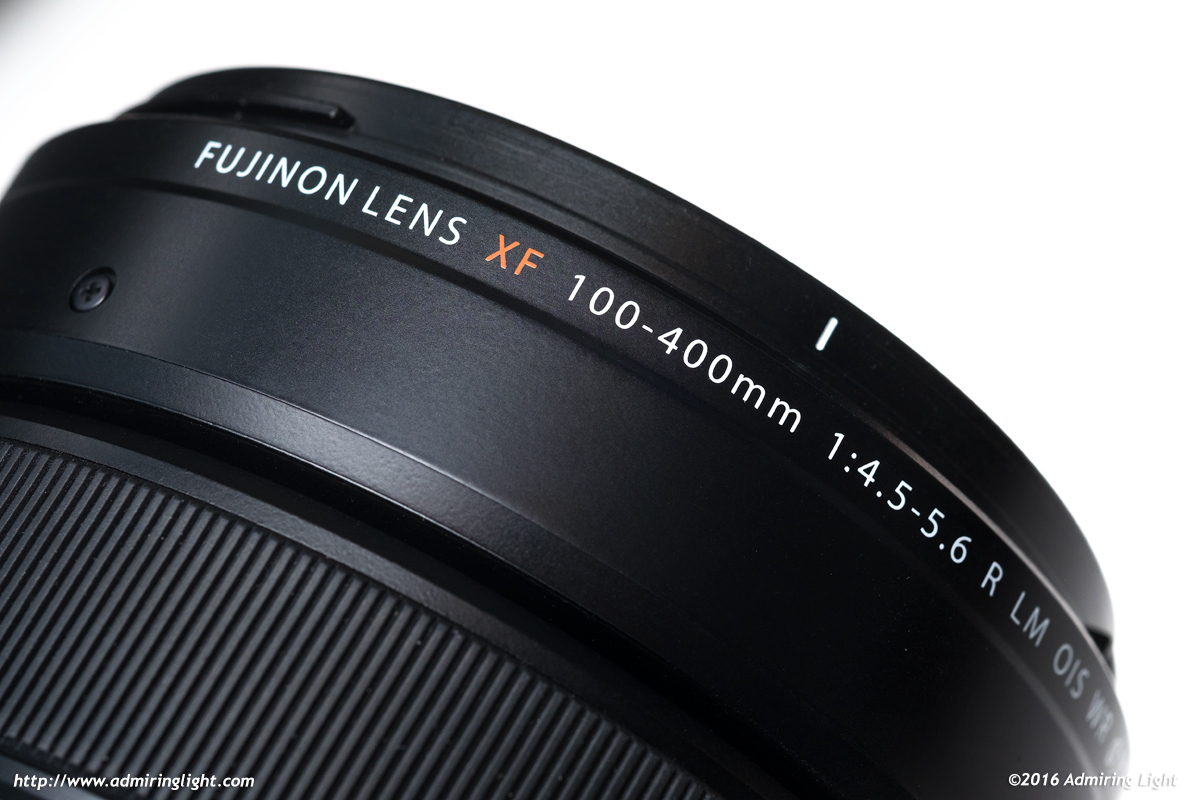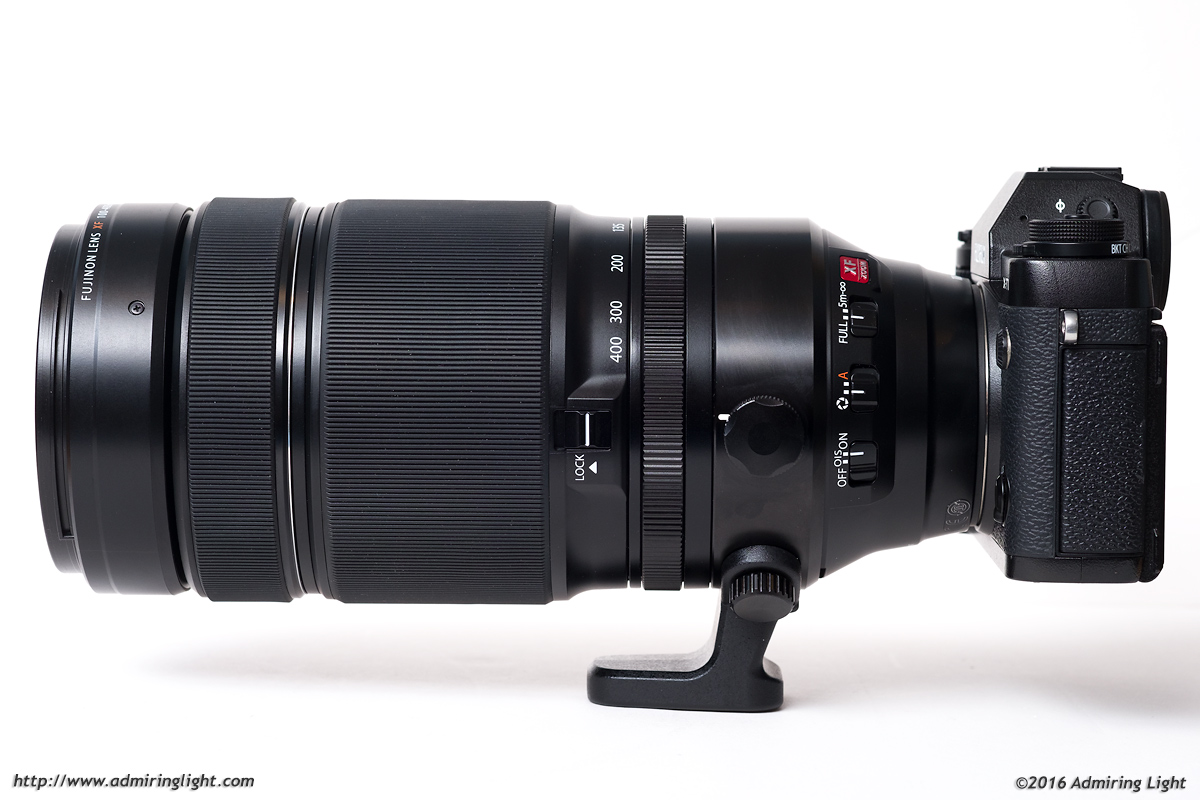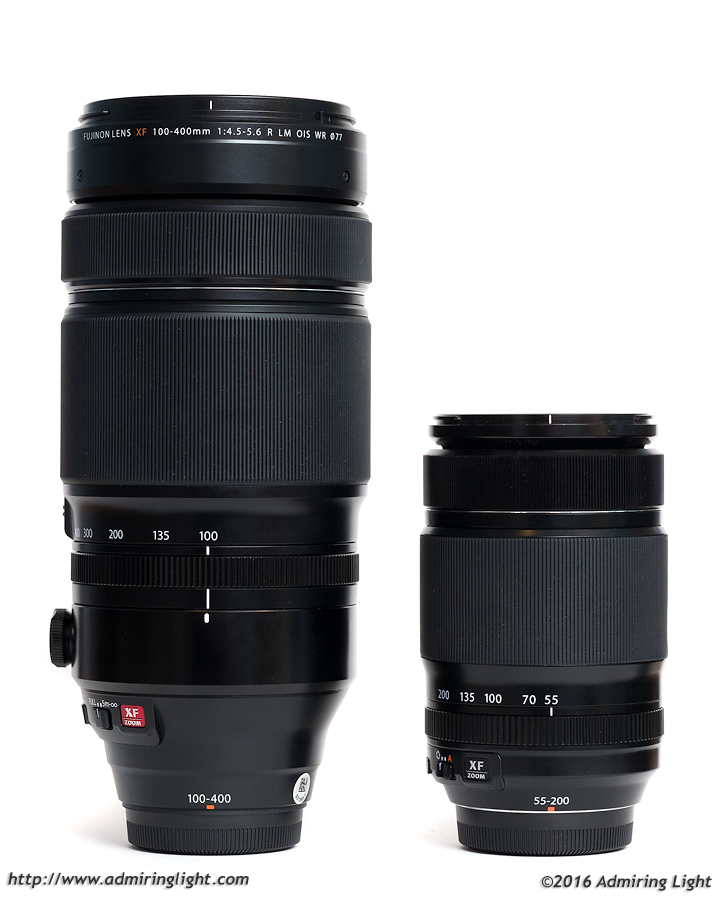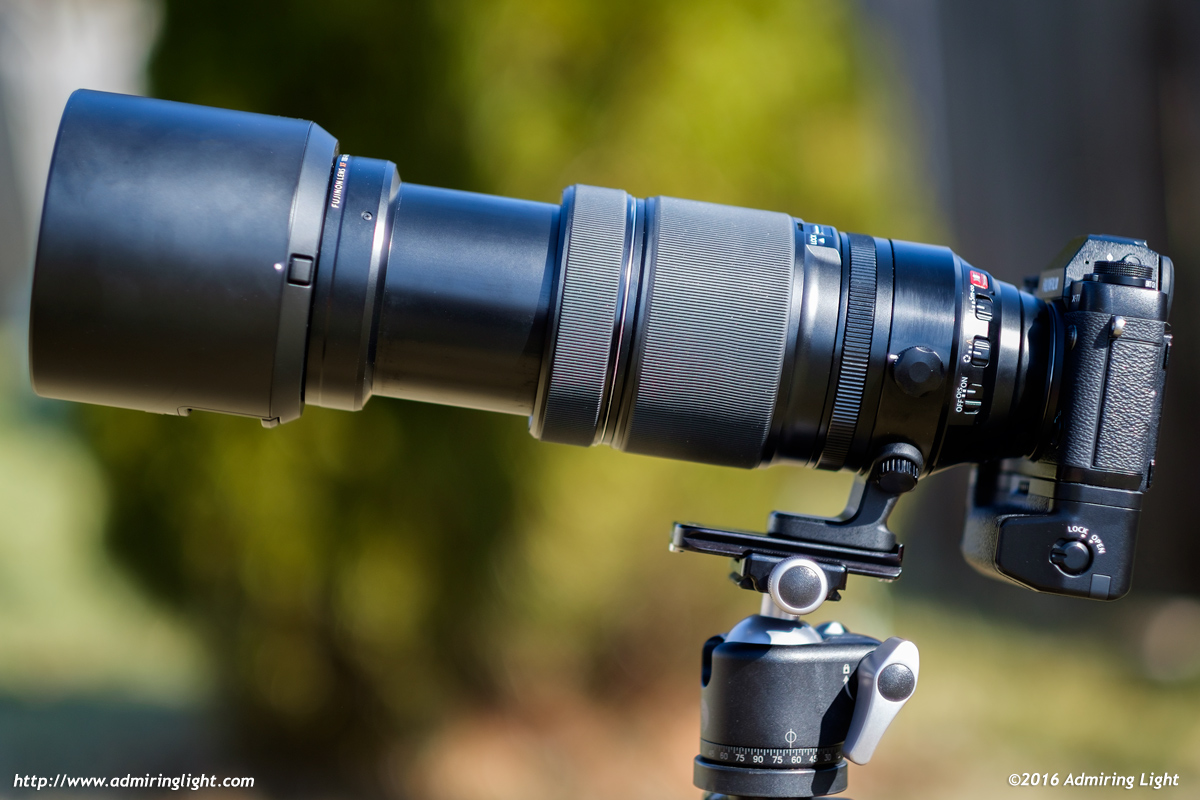Fujifilm continues the fleshing out of their already impressive lens lineup with their first supertelephoto offering: the Fujinon XF 100-400mm f/4.5-5.6 R LM OIS WR. This telephoto zoom has an angle of view similar to a 150-600mm lens on a full-frame camera, providing some serious reach for the Fuji X-Series cameras. The $1,899 asking price makes this the most expensive lens in the X-Series lineup, and given Fuji’s reputation with the other excellent XF lenses, expectations are high for this zoom.

Construction and Handling
The XF 100-400mm f/4.5-5.6 R LM OIS WR has a bunch of letters in its name, and while it may be a mouthful to say (and write), the letters are consistent across the Fuji lineup. In this case, the alphabet at the end of the lens name lets us know that the 100-400mm has an aperture ring, a linear focus motor, optical image stabilization and weather resistance. The 100-400mm’s external construction is predominantly high-grade plastic, presumably to keep weight down, with a metal tripod collar. The lens is tightly assembled and relatively well constructed, though it feels less premium in build than the 50-140mm f/2.8. If you own the Fuji 55-200mm lens, the 100-400mm feels very similar in construction. I’m grateful for the lower weight, but the use of plastics has one detriment: the lens flexes a bit in the tripod collar, even when it’s tightened down, such that there’s a bit of droop after locking down the tripod head. I have a very sturdy tripod head (Really Right Stuff BH-40) and the head isn’t moving after lock down: it is visible that the lens itself is moving slightly inside the tripod ring, which is a bit of a disappointment.

I will say that the tripod ring moves very smoothly in operation, though I wish the locking knob was a bit larger. The ring can’t be removed, but the foot that attaches to the ring can, using two thumb screws to attach and detach the tripod foot. Thankfully, the foot is far forward on this lens, and unlike the XF 50-140mm f/2.8, doesn’t interfere with the vertical grip on the X-T1. The lens comes with a very large lens hood that locks in place smoothly (and has a hood locking button to release). Fuji again provided a nice window in the hood to allow for the operation of polarizing filters while the hood is in place, but replaced the removable window cover with a convenient sliding mechanism. Clever!
The 100-400mm is the largest Fuji lens yet for the X-Series, as might be expected. There’s really no free size reduction for mirrorless lenses once you get into the telephoto focal lengths and the same goes for creating an APS-C image circle, so the 100-400mm is similar in size to most manufacturer’s lenses that cover a similar focal range and aperture range. The lens is about 1.5 inches longer than the Fuji 50-140mm f/2.8, but is notably larger in diameter. Despite the size, Fuji has managed to keep the weight down fairly well. The lens is lighter than I expected; it’s around a half pound lighter than the similarly sized Canon 100-400mm f/4-5.6L II, though it’s certainly not light in an absolute sense at 3 lbs.

The lens handles well in the field, though I would recommend using the larger Fuji bodies on the lens. I shot most of the time with my X-T1 with the vertical battery grip to give some extra support. The vertical shutter release also helped with handling a lens of this size. The zoom and focus rings both move smoothly and are well damped, though I felt the zoom action, while smooth, was a bit too stiff for my liking. There’s a lens lock to keep the lens closed at 100mm, but I didn’t find it necessary, as zoom creep just wasn’t happening with this lens. The aperture ring moves with very distinct clicks, though the feel is a bit different on this one than the other Fuji rings. It feels as if the spring-loaded detent bearing is a large plastic bearing rather than the small metal bearings used in the other aperture rings, but in any case it’s fine in use.
The lens extends rather considerably when zooming from 100mm to 400mm, bringing the total length with the hood in place at 400mm to around 13.7″. The inner lens tube shows no flex or wobble when at full extension.

While I have a few issues with the operation of the lens, it’s a well put together package. The real issue is simply finding a way to put it in your bag. With the relatively small size of the other Fuji lenses, the 100-400mm makes it tough to carry in any bag you may have for your kit. Indeed, I didn’t have a single bag that the lens could be carried in with the exception of a giant shoulder bag that I received as part of the press package from PhotoPlus this year.
Autofocus and Image Stabilization
The 100-400mm f/4.5-5.6 has a similar linear focus motor to the other Fuji zoom lenses, and this has been proven to be fairly quick and quiet. Due to the precision required at 400mm, the focus motor can take quite a while to lock if you need to change focus distance from very near to very far or vice-versa, though once you are in the proximity of your subject, focus locks rather quickly. Fuji provides a focus limiter for the 100-400mm, which can be enabled to limit focus to 5m to infinity for times you want increased focus speed and don’t need to focus up close.
Indoors, focus speed also slows down a fair bit, which is to be expected given the relatively modest f/5.6 aperture at the long end. However, I found focus accuracy to be excellent during my time with the lens. When testing the lens in continuous autofocus, I was able to achieve a fairly reasonable hit level with my son running towards me, even given the long focal length and his relatively close proximity. I still wouldn’t choose Fuji for pro-grade sports at this point in time, but this lens can be used with the more recent bodies for some good action shooting if need be. Just don’t expect to get every shot in perfect focus. See the shot below for an image I was able to grab out of the run.

The 100-400mm also features Fuji’s latest optical image stabilizer. Fuji’s been killing it with their OIS on their past few zoom lenses, and they’ve set a new bar with the stabilizer on the 100-400mm. Fuji claims this will offer handholding around 5 stops better than without the stabilizer. With my normal technique, I need approximately 1/800s to get sharp shots at a 600mm equivalent focal length. With the Fuji at 400mm, I’m quite easily getting 5 stops of stability (1/25s) very consistently, and around half of my shots at 1/15s and 1/10s are sharp. That’s 50% effectiveness at 6 stops slower than I can handhold without stabilization. It’s so good that I even managed to get a small handful of shots, such as the quick grab below, at an astounding 1/5s handheld: over 7 stops slower than I can normally handhold a lens of this length. It’s simply astounding.

Needless to say the stabilizer comes in very handy with this lens, and the ability to shoot at 1/25s or 1/50s and just KNOW that the shot will be sharp is a great comfort. It’s a truly impressive stabilizer and probably the best I’ve ever used.





Leave a Reply